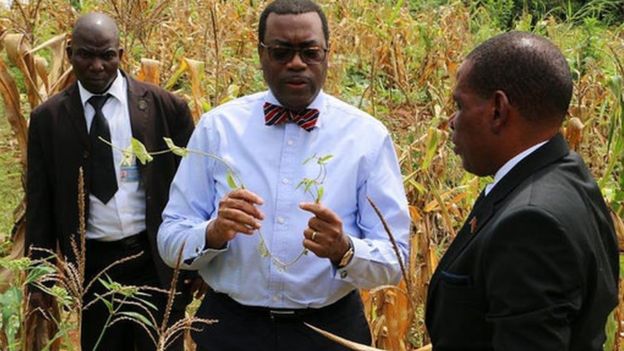By Doreen Ahimbisibwe, Olivia Obiero, and Thomas Bariti of Microsave Consulting
In the previous blog, we looked at why financial institutions should focus on youth. We examined the financial needs of the youth, the constraints at the demand and supplysides, the perceptions and reality of youth on financial services, and the business case for financial institutions to focus on youth. From experience, we know that many financial service providers (FSPs) wish to serve youth but lack appropriate products and services that suit their needs.In this blog, we highlight prominent aspects that financial institutions need to focus on as they design and deliver financial services to youth.
FSPs must consider the following six aspects if they wish to serve youthprofitably and successfully:
- The youth are not a homogeneous group
We often hear FSPs say that they want to design products that will “generally”appeal to the youth. This risks lumping youth under one segment and one category. Young people who practice agriculture, for instance, do not have the same needs as those who operateretail shops. Those involved in agriculture needloan disbursement, repayments, and savings mobilization to be structured as perthe agricultural cycle. Meanwhile,youth in retail businesses have different needs and demands. Product development, therefore, should be targeted according to business activity, geography, and ability to provide collaterals.
- FSPs need to understand whether regulation allowsyouth to access financial services and if not, what alternatives they can use
In Uganda, for example, anyone underthe age of 18 arenot allowed to open up a bank account. FSPs need to think creatively to find alternatives to formal identification and guarantee requirements.Some FSPs have resolved this challenge in KYC by requesting those younger than18 years to come along with a trusted guardian who submits their KYC and operates the account jointly with them until they turn 18.
- The youth lack collateral
Most young people are either students or have just started work or a relatively young enterprise. Therefore, they do not have the usual collateral that FSPs require, such as land title and car logbook. They, however, might be able to provide collateral in the form of chattels, which may include business or household items. For others who lack collateral, group members can provide a guarantee to access the loans. FSPs should be flexible to serve the youth and consider starting them off with small amounts and gradually increasing these amounts over time based on their performance.
- FSPs need a multi-pronged strategy for risk management
Some FSPs prefer to use guarantees to manage the risks or usesocial funds and crowdfunding. In this case, when the youth fail to repay their loans or some of the transaction charges they incur, they have a fund in place to fall back to. For example,
- Some FSPs in Africa have used guarantee funds to cater tothe risks that farmers encounter. Such guarantee funds can also be considered in youth financing. The Ugandan government through the Agriculture Credit Facility provides interest-free loans to selected financial institutions to on-lend to small- and medium-sized value chain actors. This enables the actors to access cheaper credit. The FSPs on the other hand can obtain a 50% reimbursement on the loans after they lend to the value chain actors.
- The Nike Foundation covered transaction costs foradolescent girls who wanted to open up accounts at two FSPs in Uganda for two years. This offered a twofold advantage. Not onlydid this cover the FSP’s operational costs on the accounts,but also allowed the girls to grow their savings and appreciate the value of saving in a safe space.
5. FSPs require to show buy-in and commitment from their top governance and executivestoward serving the youth. This will involve training staff on how to serve youth with respect and dignity. They would also need performance metrics and reporting formats to monitor uptake and follow-up of the youth portfolio.
6. Some youth need non-financial services to enable them to gain further knowledge and skills and run their enterprises professionally and efficiently. The FSPs can offer thesenon-financial services if they collaborate with a third party.For example, a few years ago, the Population Council partnered with Finance Trust Bank and FINCA—both located in Uganda—to provide financial education to adolescent girls who opened accounts at these institutions. Opportunity Bank Uganda has also engaged providers like Teach a Man to Fish to equip customers with business management skills including record keeping, customer care skills, digital and financial literacy, and networking.
To bring all these opportunities and issues together, FSPs must use a systematic approach to product development for youth. MSC uses the 8Ps Framework to do this, as outlined below.
| Attribute | Description |
| Product (design) Specific product features | MSC was recently involved in developing micro-insurance products for gig workers in Kenya, most of whom were youth. One of our key lessons from this engagementwas the need to focus on the use-cases and not on traditional or conventional insurance and microinsurance needs. Gig work is characterized by on-demand and unpredictable workflows therefore the use-cases for gig workers may vary, depending on the type of services they offer. For example, maintenance and installation professional workers took precautionary measures to protect against accidents while at work, and so did not feel the need for insurance. Being able to unveil such insights is critical in later ensuring uptake and continued use of the product. |
| Price Any charges accrued | The pricing of a product will also influence the degree to whichitfinds acceptance amongyouth. While the costs of product delivery plus the margin must be covered, the price should also be competitive. A competitors’ analysis helps an institution to determine the product price. Our research revealed that rural youth in Uganda prefer to use informal savings channels, such as VSLAs, since these demand no associated costs. FSPs should therefore take into account such considerations. |
| Process How the product is delivered | Our recent work with a group of youth in Uganda revealed that they have a poor perception of FSPs because they have had bad experiences in trying to access loans from them.They find the processes too cumbersome. FSPs may innovate processes to allow youth to maintain informal groups and use these to originate, guarantee, and repay loans. We designed one such product for an FSP in Uganda. The product caused great excitement among the youth as they feltthat they now owned the process and were responsible for any delays in accessing loans. Such a process also reduced the burden of loan recovery from the FSP. The group members guarantee each other and are responsible for loan recovery. |
| People How the people involved in delivering the product treat the clients | Staff who are assigned to serve the youth should be trained on how to handle them, especially in terms of marketing and customer service.FSPs can also use different approaches to reach out to youth by using influencers for marketing and outreach,for example, Safaricom’sBlaze flagship program targets youth below 26 years.The program works with influential mentors who have succeeded in their careers or businesses to inspire youth. |
| Place The product or service is available where and when it is wanted | The findings from one of our projects indicate that convenience is a key attribute that youth seek. They do not want to queue in banking halls, as most are fairly digitally literate.FSPs may consider using the client-journey approach to identify areas that can potentially be digitized. They should also offer options like the use of digital channels like mobile apps, agent banking, and mobile banking to youth. |
| Physical evidenceAppearance of product delivery systems | The youth want to keep up with trends. Therefore, ATMs, smart cards, text messages, or confirmation codes to confirm account ownership or transaction tend to appeal to this segment and should be considered. The promotional material used should also appeal to the youth. For example, the images on brochures should appeal to the youth. |
| Promotion Includes advertising, public relations, direct marketing, publicity, and all aspects of sales communication. | Social media platforms like Facebook are popular among the youth. Research conducted by MSC also showed that in Africa, radio is a popular modeof communication. FSPs should utilizethese to communicate with the youth.Other modes of communication could include drama shows and comics and any other modes that appeal to the youth. |
| Positioning Is the effort by the financial institution or product to occupy a distinct competitive position in the mind of the target customer? | The product should be designed and packaged specifically to appeal to youth so that they are proud to associate with it. The youth,for example, could be engaged in selecting the name of the product and suggesting additional features that resonate with them,for example, Bankika, which is a youth savings account fromKenya Commercial Bank. The bank has rolled out the campaigns and competitions to attract the youth to enhance uptake and usage of the account. |
In conclusion, FSPs should design products and services that reflect the diversity of youth. Products should vary by demographic parameters, such as age, education, and geography or life cycle stage and economic occupations, just as with older clients. The major product differences lie in marketing, delivery mechanisms, and in the accompanying non-financial services.Taken together, these specially designed products will be critical for building a young person’s capacity to save, manage their money, and generate income.





